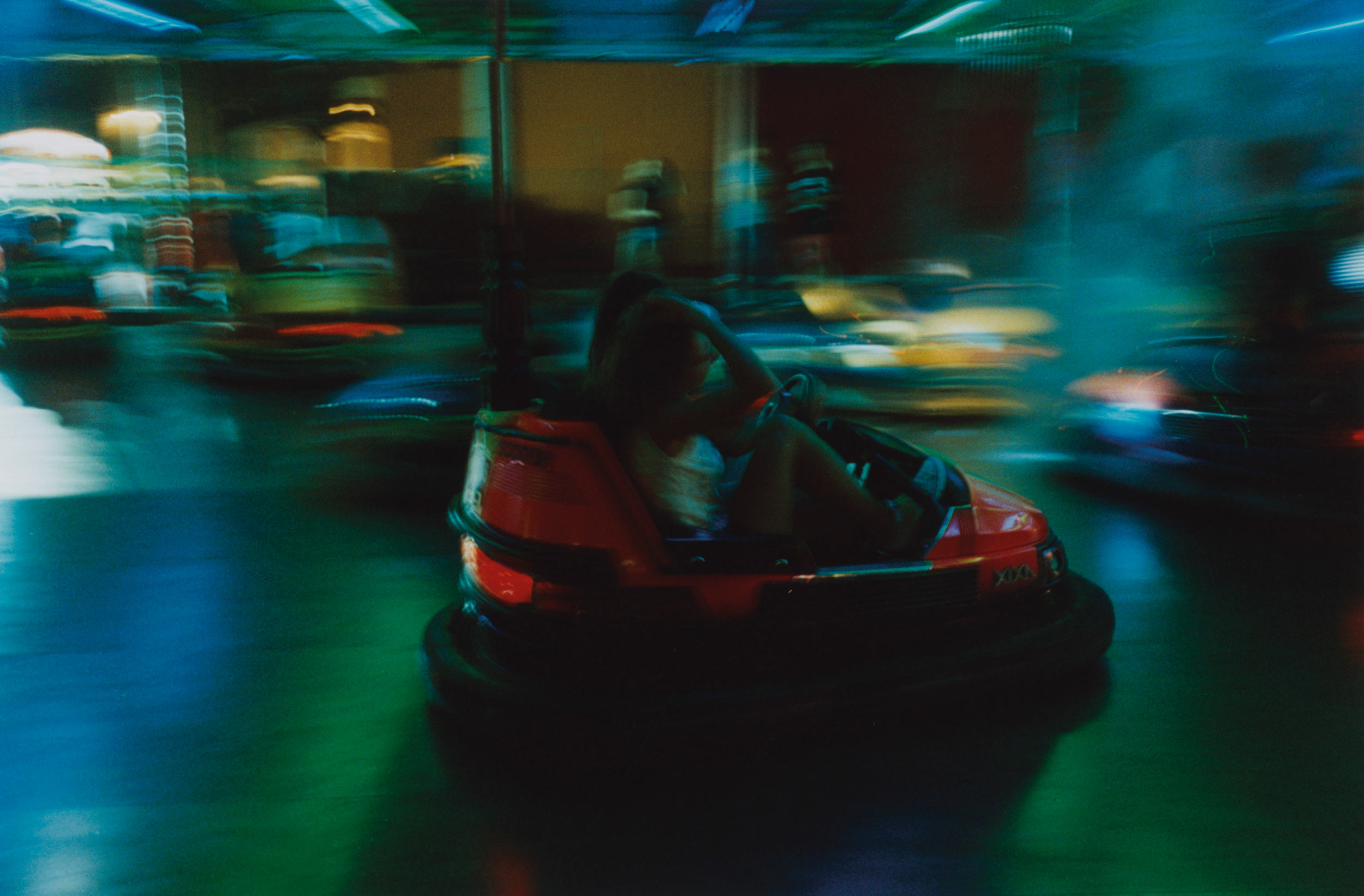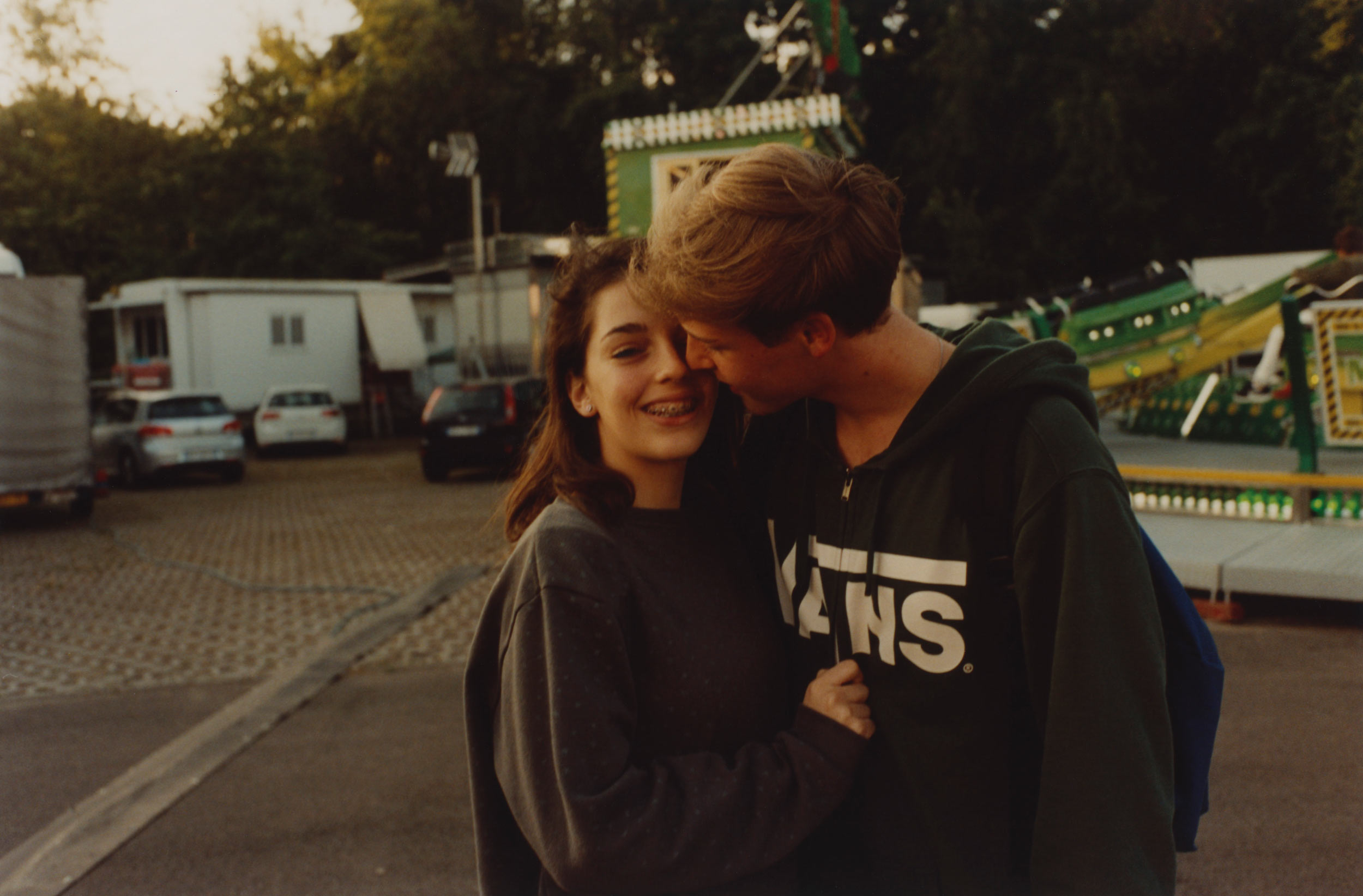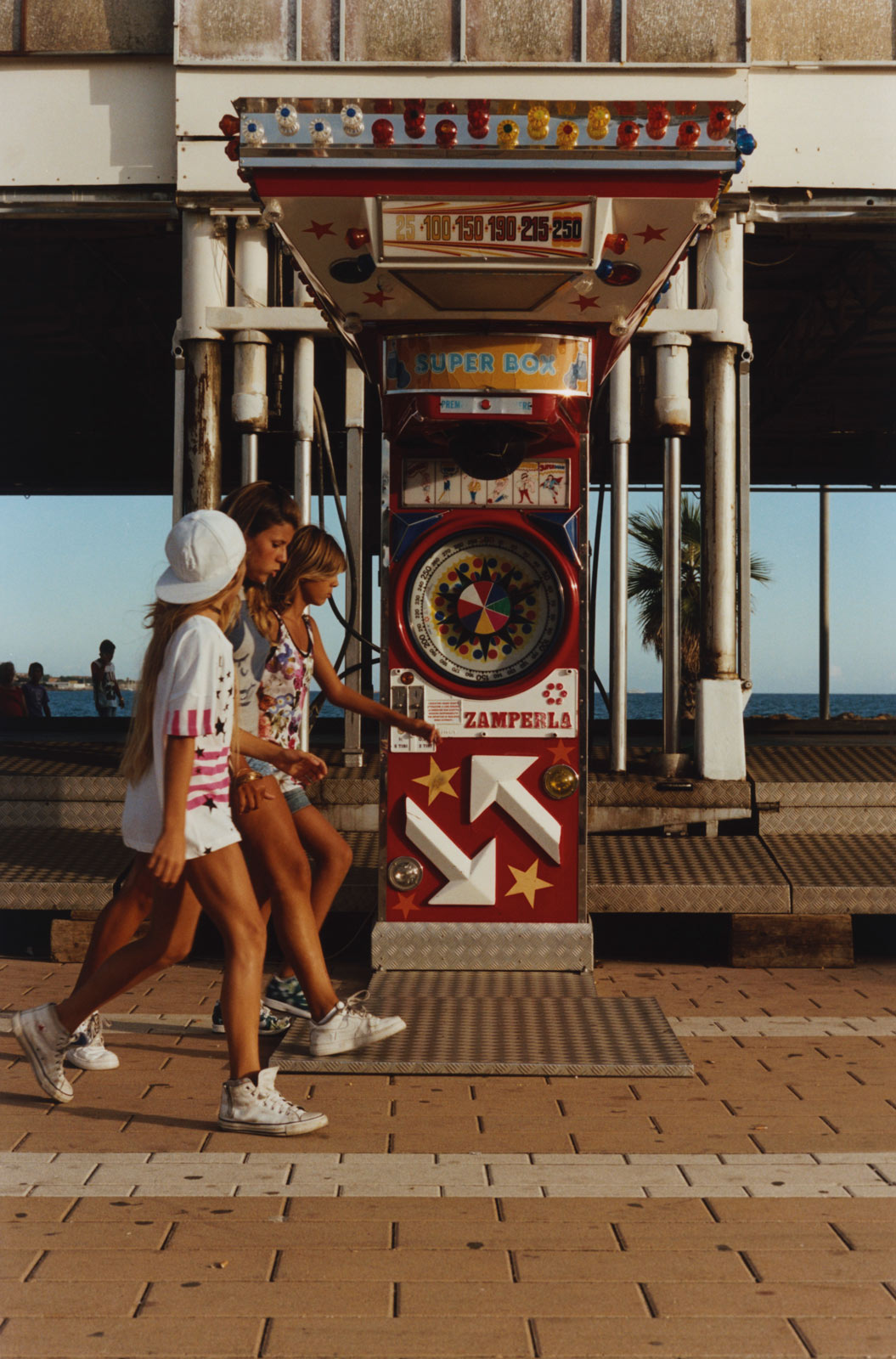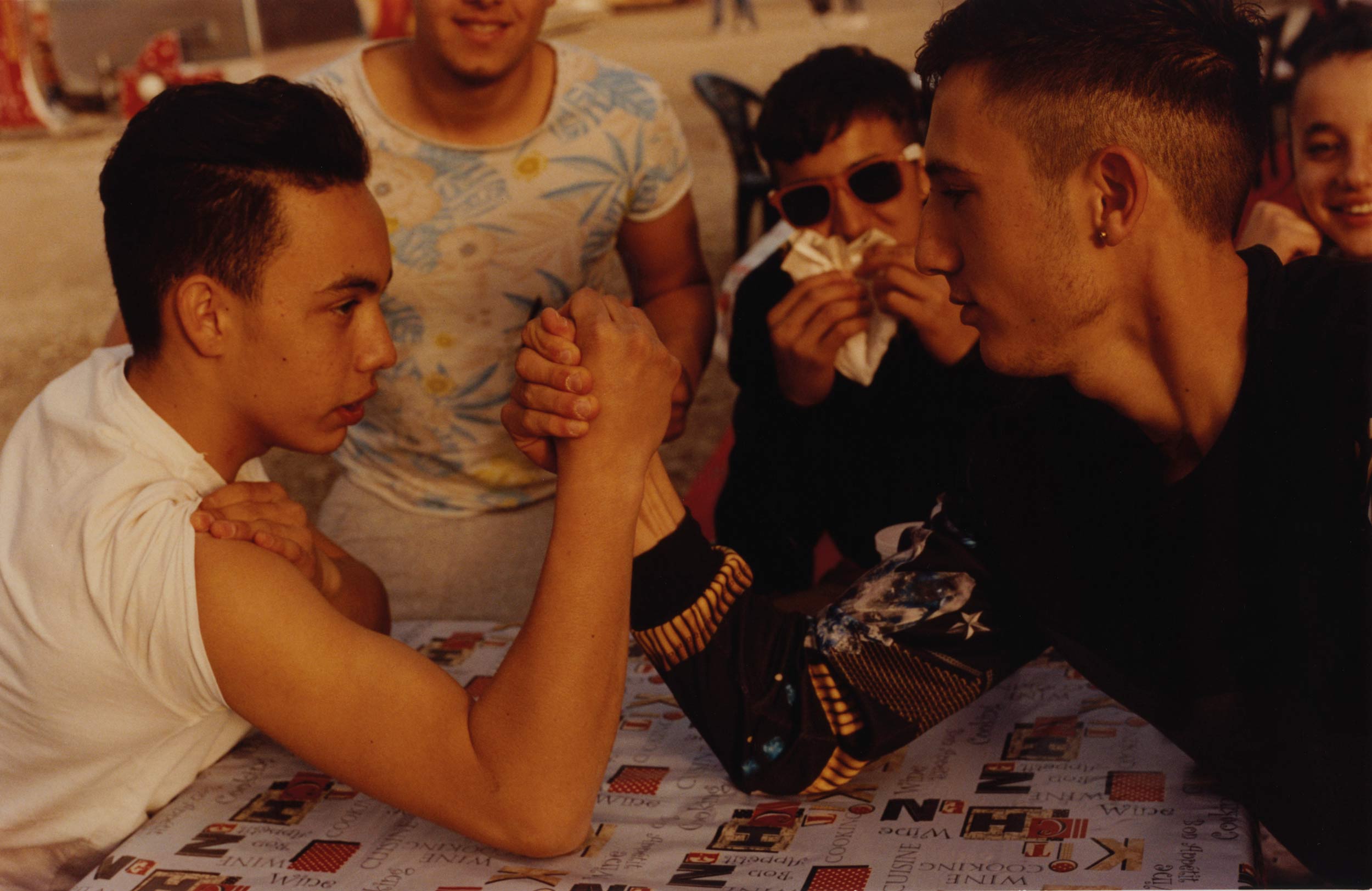The photography book follows teenagers navigating love, angst, and nightlife against the flickering neons of a rural Italian summer
“This project is a feeling, a sensation embodied by cheap shimmering lights and worn-out plastic surfaces, a spinning wheel of curiosity and insecurity,” Paolo Zerbini says of his latest photography book, Tagadà. Published by Skinnerboox, the monograph takes readers for a spin around the funfairs that constellated his teenage years. Born and bred in San Benedetto Po—a rural town a short drive away from Mantua in Northern Italy—Zerbini always felt “the urge to get out of that claustrophobic place” and explore what life could be like elsewhere. “All I craved was chance and novelty,” he explains. “I remember vividly how I dreamed of going away and starting afresh in a different country, my desire to leave everything behind and become a brand-new person.”
For someone struggling to fit into a box, Zerbini found San Benedetto Po painfully restrictive. “I loved my friends, but I hated having to play into the role of ‘cool’ and ‘uncool’ kids,” Zerbini says. While the most popular teens were the ones good at football, he was more naturally drawn to basketball, and often felt like an outcast. If he wasn’t hanging out with his peers at the nearby river, or speeding off on his 50cc scooter, the photographer-to-be could be found playing at the local arcade and rehearsing with the punk band he had formed with his closest friends. “Having that band was one of the few things that saved me from the boredom of my suburban childhood,” he says.
Yet, nothing brought more excitement into his “confused teenage life” than the comeback of the local summer fete. What at first glance seemed like an ordinary, at times garish event—marked by Ferris wheels, target shooting stalls, and cotton candy mountains—became an unspoken rite of passage among local teenagers coming of age. “Those five days a year when the funfair was in town were filled with unparalleled emotions for us,” Zerbini says. “Throughout my adolescence, summer fetes were the only time when my peers and I were allowed out until late without our parents’ supervision. For once, our families didn’t worry about us being left on our own, as the whole village would be keeping an eye on us.”
“The same sense of community, the same teenage frictions and tensions, the same ‘tortured’ loves of my adolescence were there—right before my lens.”
Despite being a “time of freedom,” not even the annual funfair was enough to undo the tangle of insecurities, questions, and puzzling emotions that shaped Zerbini’s journey into adulthood. Quite the opposite: Its flashy, electrifying atmosphere made it the perfect theater for pubescent fistfights, blooming summer romances, and abrupt heartbreak alike, mirroring the roller coaster of sensations that is teenagehood. Tagadà gathers together a vibrantly saturated series of images, centering the summer fete as the ultimate landscape for adolescent self-discovery.
As Francesco Zanot writes in his afterword to the book, “The youths Zerbini portrays are going through the same unsettling feelings that shook him all those years ago. The same pulses, urges, rages, desires, the same electric shocks.” Captured on film between 2014 and present day, the photographs feel like an ode to “firsts”—from the nerve-racking anticipation of a first kiss to the discovery of nightlife, cigarettes, and hangovers. Candid pictures of young couples embracing against the lights of merry-go-rounds are juxtaposed with shots of teens proudly posing for Zerbini’s camera—trying their strength in impromptu arm wrestling competitions, or else having a go at punching bag machines.
When not enjoying the bursts of adrenaline triggered by bumper cars and vertiginous rides, the protagonists of Tagadà can be seen staring in awe at their friends—daydreaming of their next adventure, as if stuck in the limbo between childhood and adulthood. Even without knowing their names or their stories, it is easy for readers to empathize with the clumsy youngsters documented in the book, with the whirl of emotions running through their drastically-changing bodies. It was this indirect connection that persuaded Zerbini to “photograph [the funfair’s] stuck-in-time atmosphere, before it was too late.”
“This project is possibly the oldest photographic series I remember ever wanting to shoot,” he says. “At the time, I was studying photography at the University of Cheltenham. Coming home for the summer every August, I would witness the [reappearance] of the magical world.” Caught between wonder and an irremediable sense of nostalgia, Zerbini began to look for summer fetes all across Italy. He focused on the project for nearly 10 years, collecting images anywhere—from his native Lombardy to the tucked-away villages of Sicily—always searching for interesting faces and situations, bubbling around a given attraction. “It felt like traveling back in time,” the photographer says, adding that—if not for a more prominent presence of mobile phones—“it was fascinating to see how little funfairs had changed over the years”.
“The same sense of community, the same teenage frictions and tensions, the same ‘tortured’ loves of my adolescence were there—right before my lens,” Zerbini explains. The volume’s title—which comes from the name of these fairs’ most popular ride—couldn’t have been more fitting. “To me, the tagadà best represents the troubled spirit of teenagehood,” Zerbini explains. “It is the most extreme of them all, and yet the freest: Kids fall all the time while trying to stand, or even sit, on its spinning surface. Others refuse to venture [near] it, instead volunteering to guard [their friends’] bags. Ultimately, it all comes down to how much you are willing to risk to be praised by others.”
For many of us, daring to dance on the tagadà felt like an early act of rebellion. Teenagers strived to be seen by their peers when no one else—let alone they themselves—knew who they were. For Zerbini, releasing Tagadà meant finally coming full circle, a bit like “defeating the monster at the end of the video game,” he jokingly explains. “Tagadà prompted me to explore places I would have never visited otherwise, which is one of the greatest gifts photography can give,” he says. “Now that the book is finally out, all I feel is an incredible sense of lightness: It is up to whoever picks it up to get something from it. All I can hope is that they enjoy the ride as much as I did.”
Paolo Zerbini’s Tagadà is available for purchase here.































